Exploring Darkness: A Journey Within
In Search of Something Unique
Time is a funny thing. As technology evolves and hardware limitations change with each generation, some developers yearn for the way certain classic games used to work. While we often see this in the visual department, with pixel art and the polygonal style of PlayStation 1 being popular nowadays, some teams aim to create open and somewhat abstract experiences. The goal is to imitate or replicate the sense of discovery offered by the original The Legend of Zelda or some classic PC adventure games. Naturally, this kind of project runs the risk of alienating players from more recent generations who aren’t accustomed to this type of structure. However, it’s hard not to admire the intentions of these developers.
Such is the case with Hell is Us. Rogue Factor’s latest project has been shrouded in mystery. While previews have answered some questions, the general public still has many. Interestingly, this is the studio’s first major game. For years, they have released smaller titles that haven’t quite grabbed players’ attention. Fortunately, Nacon, known for publishing high-quality mid-sized games, saw something special in this release. Many eagerly await the arrival of Hell is Us, especially after its appearance in several State of Play events.
After a few years in development, Hell is Us is finally here, offering an ambitious experience. Beyond its narrative and combat proposals, what stands out the most is its exploration system, which heavily emphasizes player discovery without guides or maps. Does Hell is Us live up to expectations? Have the developers managed to capture the design found in classic games? Find the answers to these questions and more in our Atomix Review.
Human Conflict
The story of Hell is Us is an example where developers try to achieve everything, but barely manage something. This doesn’t mean the adventure is bad, but it contains several issues that prevent it from being as good as the creators probably hoped. This stems from an ambition that divides efforts instead of focusing resources on their good ideas. Rogue Factor has crafted something interesting that quickly captivates players, but this feeling fades over time.
Hell is Us takes us to Hadea, a nation embroiled in a civil war that has destroyed much of its society. Amid this conflict, players assume the role of Rémi, a United Nations member searching for his parents. He discovers that he is part of an ancient organization focused on protecting Earth from an ancestral apocalypse, which has already begun in this country. This leads us on a journey through different locations to find a way to stop the cataclysm and learn more about Hadea’s dire situation.
Rogue Factor begins their work positively. Although Hadea is a fictional location, the game successfully represents a country torn by war. It’s easy to draw parallels with Ukraine or Palestine, and the game doesn’t shy away from showing the horrific consequences of such conflicts. The first town players visit has been ravaged by a faction seeking to exterminate a particular region’s members. The community’s reaction showcases various facets of humanity, making it quite compelling. However, Hell is Us quickly sets this aside to focus on the apocalypse theme, creating a clear identity crisis.
The war and humanitarian crisis in Hadea eventually become background elements of the adventure. Soon after arriving in the first town, the game explains how the community turned against itself, with neighbors hanging others, and the tree where bodies dangle is easily found. Yet, the game doesn’t confront players with these themes. Instead, it directs them to find a tunnel for the protagonist’s journey to stop an impending apocalypse that has already begun.
This pattern repeats throughout the game. Cities under fire, with bodies strewn in the streets, serve as mere pathways connecting puzzles and action sections. While the game doesn’t shy away from discussing or depicting humanity’s terrible acts in wartime, its real focus lies on an ancient civilization hiding a solution to an imminent cataclysm—though interesting, it’s quite generic compared to the narrative’s other aspects. It’s disappointing that themes like class struggle, different factions, and societal changes due to conflict are relegated to optional information from NPCs.
Nevertheless, Hell is Us does not have a bad story. On the contrary, what Rogue Factor presents remains entertaining. While its characters are generic, lacking more than one personality trait, the plot’s progression is engaging. There is eventually a connection between the apocalypse and the war in Hadea, with tales of an ancient kingdom painting a vast world to explore. This is one of the game’s strengths; Rogue Factor has created an expansive universe with abundant additional text and enough ambiguity for players to fill the gaps themselves.
However, the narrative is problematic. Hell is Us only needed one of its two main themes. The civil war is presented realistically and doesn’t sugarcoat human atrocities, but this quickly becomes background noise. The mission to avert the apocalypse unfolds on a grand scale, allowing players to explore ancient tombs and seek artifacts, but clumsily links past events to present circumstances. The developers clearly had great ambition, yet the outcome fails to satisfy either of these two elements.
The Reality of Unreal Engine 5
Although Hell is Us has a few interesting visual ideas, the overall experience is generic. Thanks to Unreal Engine 5, Rogue Factor was able to create a realistic world, working well while exploring war-torn buildings and towns. However, upon visiting ancient temples and cities, the title becomes monotonous. Much like its narrative, a few interesting ideas give this game an identity, but the execution leaves much to be desired, especially given the themes present.
The studio aimed to create a world as realistic as possible, and they succeeded. Hadea is a decaying country with no stable structure. Every building bears the marks of war, while tombs show the passage of time through natural decline. The problem is, with few exceptions, most areas look identical, often taking place at night, where a blue color palette prevents the nation from standing out.
Character and enemy designs are unremarkable. On the one hand, realism allows for well-executed facial expressions capable of conveying the protagonist’s limited emotions. However, the monsters players face remain white creatures lacking distinctive features. Frustratingly, there isn’t much variety, so players end up fighting the same enemies repeatedly, quickly leading to boredom.
Utilizing Unreal Engine 5, Hell is Us works quite well, at least on PlayStation 5. Like most experiences in this generation, there are two performance modes, varying resolution, and frame rate. I played the entire game at 60fps, and while it occasionally drops frames, it’s generally stable. I didn’t encounter any bugs or visual glitches, but given the controversies other Unreal Engine 5 games have faced, it’s worth keeping an eye out for potential issues.
Rogue Factor delivers a fairly interesting experience. Their focus on realism pairs well with the war-themed narrative, effectively depicting a devastated country. However, when it comes to the more fantastical elements, Hell is Us lacks the marked personality it should possess. The result, much like the story, is inconsistent. It’s neither bad nor outstanding. The title clearly has appealing ideas, some executed positively, but overall it remains generic, likely leading many to forget Hadea quickly.
Unmemorable
Unfortunately, the generic feeling that Hell is Us generates doesn’t stop with the visual presentation. Its sound design commits similar sins. Though there is quality in the music and voice acting, the game fails to shine, resulting in an experience easily forgotten. Once again, it isn’t the elements’ quality that’s at fault, but their execution.
This becomes evident, especially in voice acting. Every actor present does a good job with the provided material, yet none of the main characters stand out. Rémi, the protagonist, is the best example. Due to his sociopathic nature, he is unable to express emotions properly. Despite the script providing intriguing moments, each of Elias Toufexis’ lines, responsible for this role, is delivered monotonously—a narratively justified intention, but unappealing. Unfortunately, the rest of the cast doesn’t have the same justification, with only a few exceptions to this rule.
The same applies to the music. The pieces accompany players during combat and exploration but fail to stand out. This is partly because the game emphasizes sound design—many areas feature no music. Instead, footsteps, weapon clashes, and strange sounds create a specific atmosphere.
Despite the lack of a strong auditory identity, Hell is Us effectively sells the idea of a world amidst war and apocalypse. The title is silent when necessary, allowing strange enemy sounds to scare the unsuspecting, flirting with the idea of a horror game. Conversely, players can hear gunfire and screams from afar without witnessing violence directly.
As with other game elements, Hell is Us‘s sound design has good ideas, and Rogue Factor knows how to create a specific atmosphere. However, much of its execution is generic. Little or none of what’s found here leaves a strong enough impression to linger longer than a few minutes. While nothing is particularly bad, what’s offered doesn’t hold much value.
Explore and Discover
Much like its story, Hell is Us features two main gameplay elements. On one hand, there’s a straightforward combat system which, despite feigning complexity, never demands more than pressing the same button repetitively. Conversely, there’s a strong emphasis on exploration and puzzles without the guidance or assistance associated with contemporary experiences. Instead, Rogue Factor releases players into a hostile world, challenging them to find answers to questions posed—a double-edged sword with a well-executed approach that’s not for everyone.
Described as a semi-open-world game, Hell is Us lacks a vast region to explore. Instead, Hadea is divided into various locations of different sizes. The intrigue? The game lacks a map or indicator to guide the player. The main premise is simple: pay attention to everything around you. By removing elements found in most current experiences, Rogue Factor asks players to listen closely to every conversation and observe their world. It’s an approach likely to deter many, but it harkens back to the freedom celebrated in some past-era titles.
Each new area hides numerous secrets, and even finding the path to continue the main story can be more challenging than expected. Fortunately, NPCs and the texts you find clearly guide players along the main campaign. What makes this experience challenging and interesting is the extensive focus on puzzles. While the first act is straightforward, allowing for easy advancement, the second and third acts are more open, often presenting walls needing specific keys.
One of my favorite examples occurs in a government office hiding the location of a key object needed in the second act. To acquire it, players must open a safe, with the combination scattered throughout the level. Texts, NPCs, and environmental clues are all at your disposal. At no point does Hell is Us point you in the direction for finding the solution, nor does it arrange discovered information clearly. It’s a puzzle in that the game gives all pieces, entrusting you to discover the correct order.
This structure is repeated throughout Hadea, constantly presenting variations that require awareness of surroundings and experimentation with the information around players. Another favorite case involves a cemetery where the game never explicitly tells you what to do, leaving it up to you to find a solution by reading tombstones and observing the area’s design. There’s no character calling to offer hints, nor is there a section on your tablet with problem-solving help. You’re alone, and Rogue Factor committing fully to this design is commendable.
Best of all, the puzzles and exploration blend masterfully. Each time you find an answer and progress, be it in the main narrative or a side mission, you achieve a sense of accomplishment worth more than any reward the game offers. The real enemy isn’t the creatures lurking in Hadea but Hell is Us itself—a sensation that’s not new but rarely executed to this level today.
I recommend having a notebook by your side. Since the game doesn’t collect important information for players, it’s easy to forget significant numbers, symbols, or details aiding puzzle resolution. This isn’t something I’ve done since the Golden Path in Tunic, and while Hell is Us isn’t as refined as the 2022 title, the end result remains captivating, provided you’re in the right mindset.
Now, as well-executed and satisfying as Hell is Us’s approach to exploration and puzzles may be, it’s also a double-edged sword. For starters, some challenges presented by the game can be more confusing than necessary. It’s easy to overlook key details, resulting in hours of walking in circles. Even though some cases allow brute force, it’s still time-consuming. However, the game’s biggest flaw in this regard is the lack of mission indicators.
Although Hell is Us’s freedom and ambiguity contribute to its appeal, they also result in situations where, after a few days without playing, it’s easy to get lost upon returning. While an NPC tells you your main mission, her guidance is vague, likely prompting many to abandon the game due to the absence of indicators commonplace today.
Despite Hell is Us requiring significant player commitment, the outcome is generally positive. Solving puzzles, finding combinations, and jotting down every piece of information makes you feel like Indiana Jones. I understand the absence of a map and clear mission log may deter some audiences, but paying attention allows for progress, and there’s undeniable satisfaction with each found answer.
Unfortunately, Hell is Us offers more than exploration and puzzles—it also features a combat system which, like other game areas, is intensely generic. Rogue Factor’s work is a third-person action game where our protagonist uses various melee weapons, like swords, spears, and axes, to fight the fearsome Hollow Walkers. Regrettably, this is one of the experience’s dullest aspects. While Rémi has a considerable arsenal and many abilities at his disposal, none shine.
Every weapon levels up with use, encouraging players to stick with one or two tools throughout. Additionally, a blacksmith can grant special elements for greater damage against certain foes, unlocking specific customizable moves. Finally, a drone assists with its own attacks, usable at any time. There’s certainly depth, but despite the game urging players to utilize all provided features, basic attacks remain unmatched.
The basic attacks of all weapons, although varying in range and mobility, are more effective than the rest of the available arsenal, due to two factors. For starters, special attacks and drone abilities don’t seamlessly integrate into a basic attack combo; executing them is slow and offbeat, reducing compatibility with Rémi’s movements. Additionally, Hell is Us mimics a mechanic from Bloodborne, allowing players to recover all lost health during battles by striking opponents correctly.
Thanks to this mechanic, using your normal attack, which is quick with a short combo, makes consistent health recovery easier. The game encourages aggression, not only due to this system but because players often face large enemy groups. While inspired by FromSoftware’s work, Hell is Us doesn’t employ their methodical, personal combat style.
On one side, Hell is Us introduces a dull combat system with interesting ideas but poor execution. Yet, it shines in exploration and puzzles. Although the experience isn’t for everyone, Rogue Factor’s commitment to the design offers engaging mental challenges for committed players. It’s a double-edged sword, but one often striking spectacularly.
Inconsistent, But…
Hell is Us is an inconsistent experience. For every positive point, the title suffers from one or two negatives. I can’t say the final outcome is bad, but neither does it stand out remarkably. Its story is entertaining, exploring war and terrible human behavior through two perspectives. However, the focus on having two main elements hinders either theme from reaching full potential, causing them to stumble over each other.
While the visual and sound design features a few standout moments and well-executed ideas, it doesn’t excel. The realness of Unreal Engine 5 and unmemorable compositions create a generic experience likely forgotten instantly. The game runs well, at least on a base PlayStation 5, but nothing gives it a strong enough identity to stand out among Rogue Factor’s work.
Exploration and puzzles make Hell is Us notably entertaining. It’s commendable that the developers managed to create something incongruent with current standards. The lack of a map or clear progress log may deter more than a few players, but those who remain will find a satisfying adventure, particularly regarding these two elements. Unfortunately, its combat isn’t a strength, and the game struggles overall.
Despite Hell is Us being inconsistent, its moments of brilliance shine greatly. Its ambition is its greatest enemy. If the story concentrated on a single conflict and the combat was more straightforward, it might be considered a hidden gem of 2025. However, the result is a product likely forgotten this year, though with some luck, might be remembered distinctly in the future.
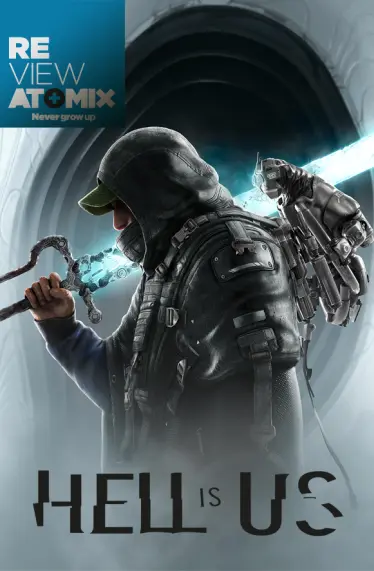




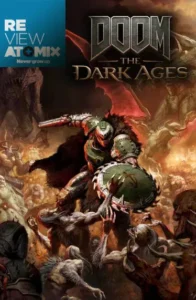


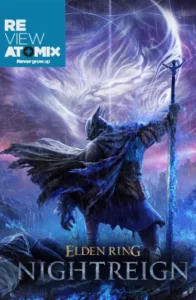


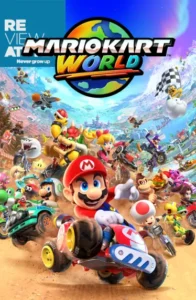
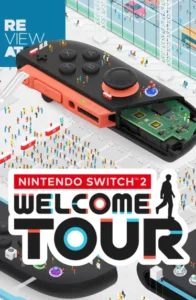
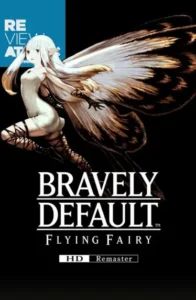
Post Comment